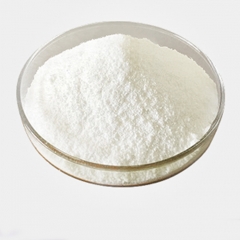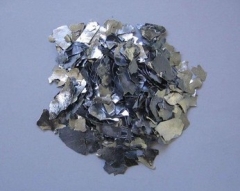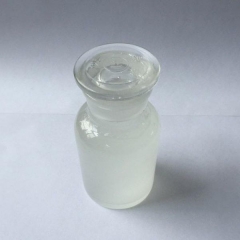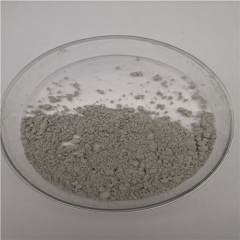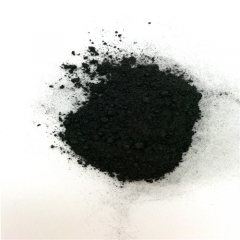What is it?
Molybdenum Cartbide
?
Molybdenum carbide is a transition-metal carbide. It is one of a number of interstitial compound families with metallic properties that are formed by carbon entering into the crystallization of transition metals.
Molybdenum Carbide's main features
Molybdenum Carbide (Molybdenum Carbide), is a gray hexagonal crystalline. It has high melting points and hardness, excellent thermal and mechanical stability, good corrosion resistance and good durability. The melting point is 2692degC. Insoluble in water, lye, and slightly soluble with nitric acid.
These are the main catalytic reactions that molybdenum caride uses:
1. Hydrogenation hydrogenolysis reactions
2. Hydrodesulfurization HDS or hydrodenitrogenation HDN;
3. Isomerization reaction
4. Hydrocarbon conversion, synthesis reaction
5. Application in ammonia synthesis.
|
Molybdenum Carbide Properties
|
|
Other Titles
|
Mo2C powder, dimolybdenum caride, dimolybdenum carbide
|
|
No.
|
12069-89-5
|
|
Combination Formula
|
Mo2C
|
|
Molecular Weight
|
203.89
|
|
Appearance
|
Gray Powder
|
|
Melting Point
|
2690
|
|
Boiling Point
|
N/A
|
|
Density
|
9.18 g/cm3
|
|
Solubility of H2O
|
N/A
|
|
Exact
|
N/A
|
Molybdenum and Carbide Mo2C Pulp CAS 12069-89-5
Molybdenum Carbide: What are its applications?
The global consumption structure shows that molybdenum can be considered an ally of iron. Molybdenum is consumed in 80% of Western developed countries. Steel absorbs 30% of the molybdenum. Low alloy steel absorbs 30%. Drilling tools and cutting instruments account for 10%. Cast steel accounts 10%. The remaining 20% of molybdenum is consumed in molybdenum chemical, molybdenum-based lubricants, and petroleum refining. In the United States, 75% of the molybdenum used in steel production was quite common in 1998.
Additionally, molybdenum based alloys are becoming more common in electronics, metal processing, aerospace, and other industries.
1. Molybdenum-alloy
The most popular molybdenum alloy, TZM, is known for its high strength and extensive properties. The United States uses TZM alloy to make the turbine disc of its engine. It accounts for 15% in total molybdenum. There are 22 grades of molybdenum, including TZM alloys. In my country, molybdenum production was almost 200 tons in the early 1990s.
The mechanical properties of TZM or TZC molybdenum alloys are better than pure molybdenum. They are widely used in high-tech, mold, and other structural parts manufacturing. Since the 20th Century, we have successfully used them to make seamless steel pipes' hot perforated heads. Powder metallurgy technology's sintered molybdenum plug reduces the amount of raw material (50% in the as-cast condition) and extends the service life 1.5 to 2x.
This seamless tube, made from molybdenum/rhenium alloy (containing 50% Re), is extremely durable and can be used at temperatures close enough to its melting temperature.
The advantages of molybdenum, molybdenum, and molybdenum-alcohol alloys include high strength, excellent electrical and thermal conductivity, low thermal expansion coefficient, and similarity to glass used in electronic tube (grids & anodes), as well as being more easy to process than tungsten. So, plates, strips and foils are used in electronic tubes, electric light sources (supporting material), parts, and metal processing tools (diecasting and extrusion dens, forging s, forging, forging dies), turbine disks) and turbine disks These components are widely used.
2. Steel alloy elements
Molybdenum is an allies to steel. It can be combined with nickel and chrome as alloying elements to reduce embrittlement which often occurs during heat treatment in alloy steels. American has found a solution to the shortage in tungsten resources by using molybdenum as a substitute for tungsten in its high-speed stainless steel. According to research, molybdenum can have twice the power of tungsten. A steel that contains 18% tungsten could be replaced with steel containing 9 percent molybdenum (adding vanadium and chromium simultaneously), greatly reducing the steel production cost. The purpose of molybdenum, which is a component of stainless steel, is to increase corrosion resistance, improve high strength, and increase weldability. You can see that molybdenum has a significant role in the iron- and steel industry.
Molybdenum Carbide's main supplier
Tech Co., Ltd. () is a professional
carbide powder
Over 12 years' experience in chemical products development and research. We accept credit cards, T/T and West Union payments. We will ship goods overseas via FedEx, DHL and by air or sea to our customers.
You can find high-quality powdered boron carbide here
Please contact us
Send an inquiry
